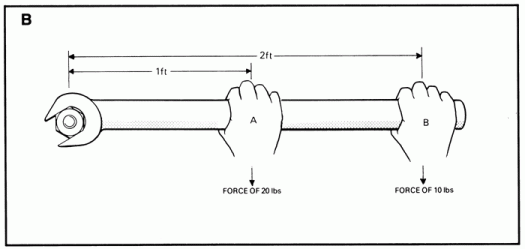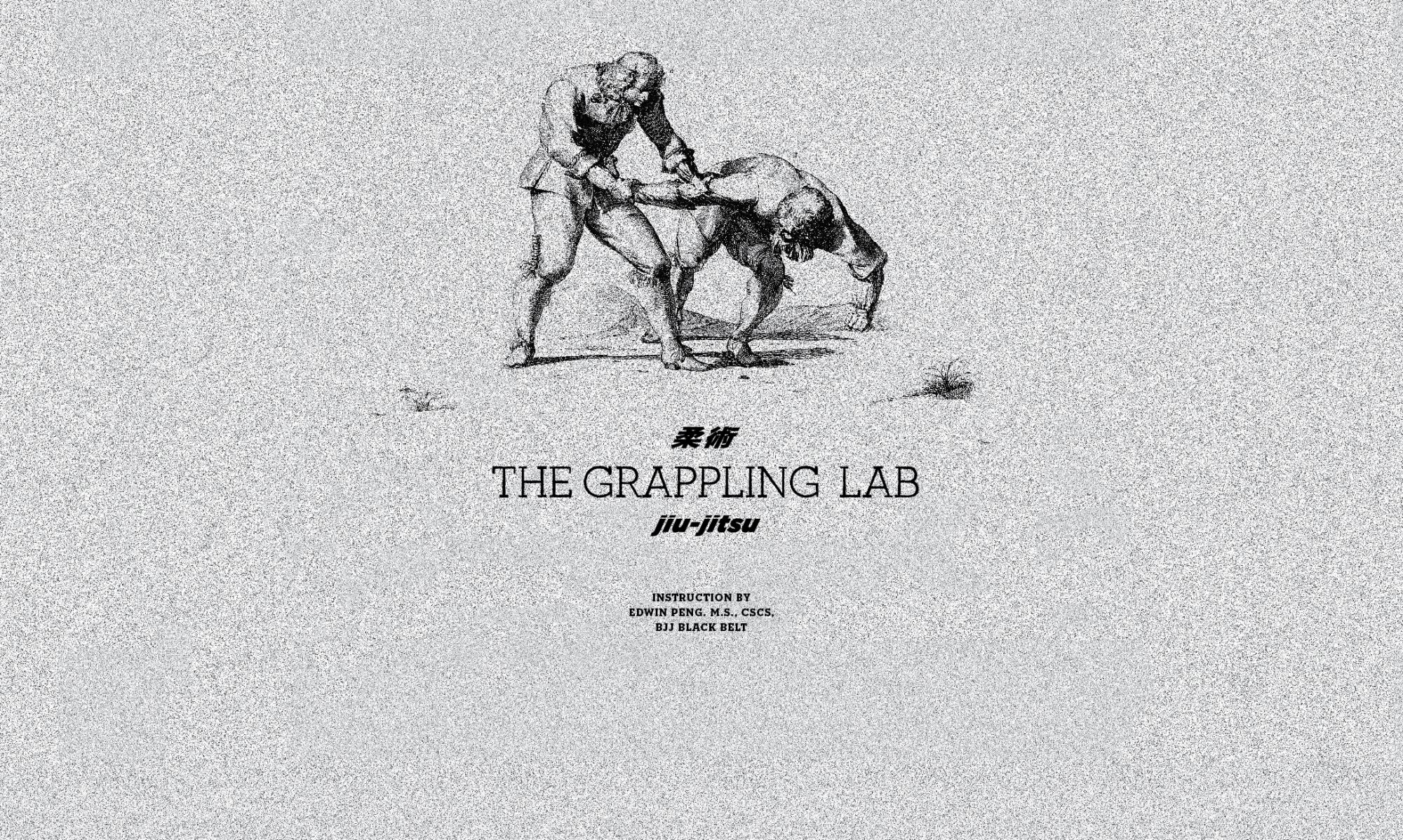An understanding of leverage and moment arms will be crucial for students to understand how and why certain techniques work. The human body is composed of a system of levers: bones act as rigid bars, joints act as fulcrums, and muscles provide the effort. By manipulating the shape of your body you can influence how much force you can produce and how much load you can withstand. Leverage is what allows a smaller person to control a larger person. While an in-depth discussion of levers are beyond the scope of this manual, the most important aspect of a lever is that the further away force is applied on the lever the stronger the force will be on the other side of the lever. Thus, by attacking at the end of the lever students will be able to control their opponent much more efficiently. Simply, levers multiply force.
Another useful aspect of attacking the end of the lever is the use of torque. While some techniques will require pushing or pulling linearly against the opponent, many times a practitioner will be required to move the opponent’s limbs out of the way. This is accomplished through the use of torque in order to turn the opponent’s body and limbs. Again, the most important aspect that can be relayed to students is that by pushing or pulling further away from the joint the more torque is produced. The length between the fulcrum and where force is applied is called the moment arm, the longer the moment arm the more force will be applied at the joint. This can be demonstrated easily with a door – by pushing on the door on the opposite side of the hinges we can easily open the door, however if we push on the side closest to the hinges it will take significantly more force to open the door.

This understanding can also be applied throughout all positions during training. A cardinal rule of BJJ is to keep the arms close to the body, students are often told to keep their elbows glued to their ribs or to make T-Rex arms. This is to prevent both the arm from extending out and also to prevent the arms from crossing the midline of the body. These positions are considered weak due to the mechanics of the arm. When the objective is to move an opponent’s arm one can muscle through the movement in order to achieve the objective, expending more energy than required and producing more strain on the body. However, if one understands how leverage works they will be able to move the arm by pressing on the end of the arm – thus saving energy and creating a mechanical advantage.
When the arm is extended straight in front of the body its center of mass is far from the origin of the arm, thus possessing a larger moment arm that can be used to generate torque. This extended position can easily be disrupted by applying torque at the end of the arm, knocking it out of position.
A powerful example of leverage is the use of underhooks. Since underhooks are established under the armpits they allow for torque to be created about the opponent’s center of gravity. Underhooks allow for manipulation of the opponent’s body through the use of leverage.
Read more about Biomechanics in Chapter 5: Gravity & Center of Gravity


One Reply to “Biomechanics of BJJ 4: Levers and Moment Arms”
Comments are closed.